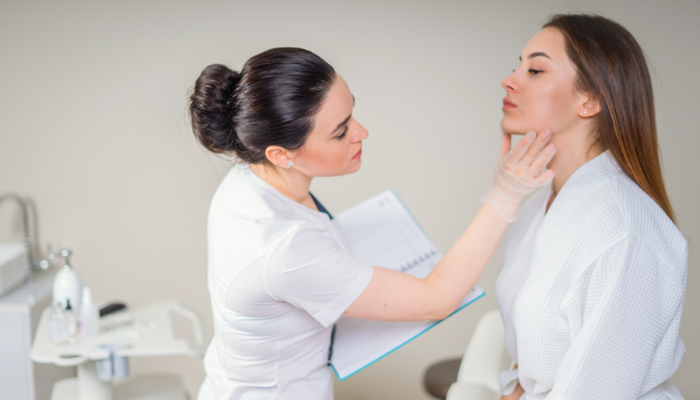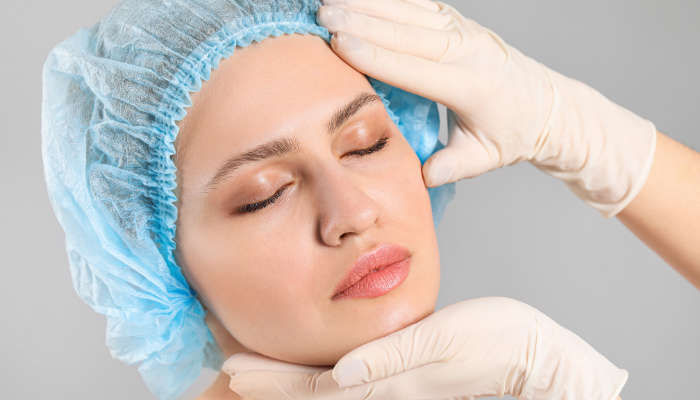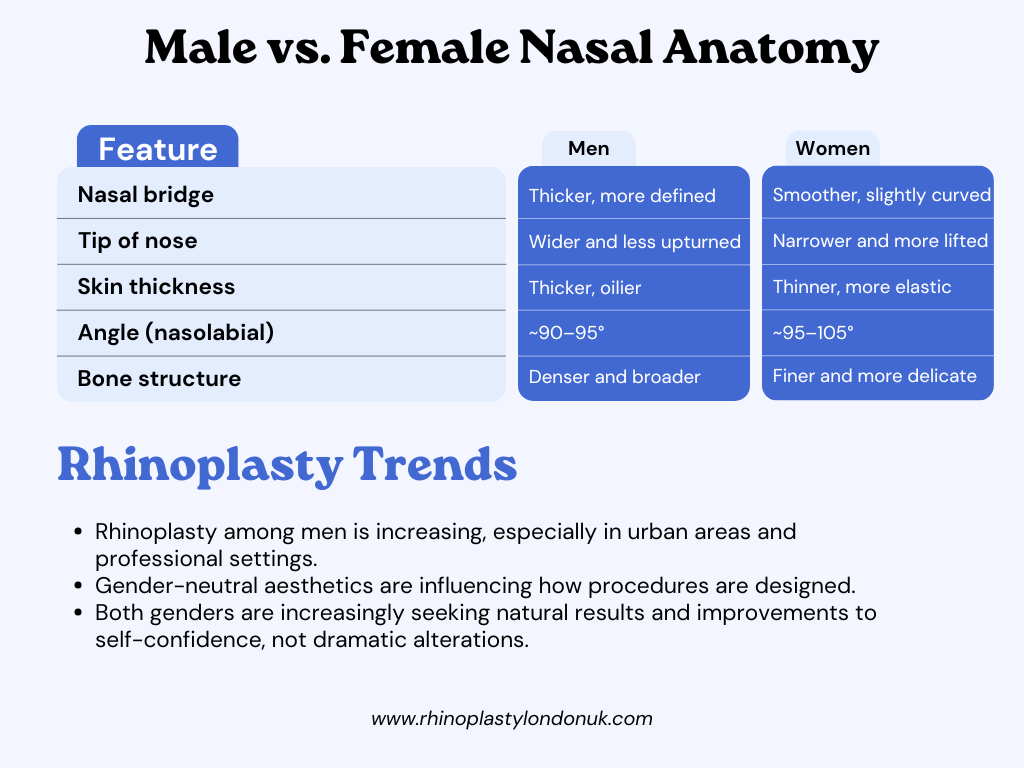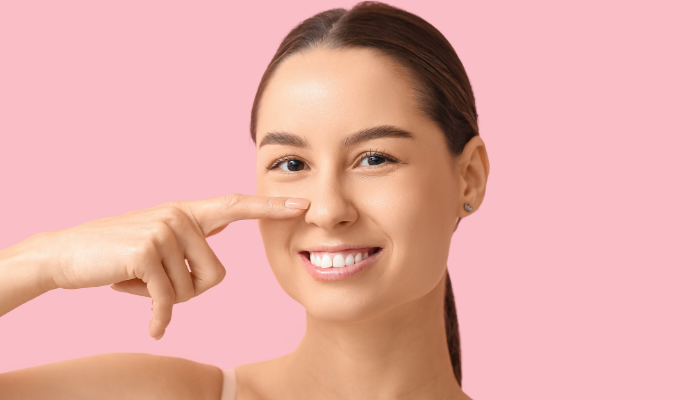Rhinoplasty is a popular choice for those looking to enhance their facial appearance or correct structural issues. But did you know that the best rhinoplasty for you largely depends on your face shape? Understanding the unique characteristics of your face can help in selecting the right technique and approach to achieve the most natural-looking results.
In this article, we’ll explore how different face shapes influence rhinoplasty decisions, the various techniques available, and what to consider when choosing the best rhinoplasty for your needs.
Key Takeaways
- Identifying your face shape is the first step in choosing the best rhinoplasty.
- Different face shapes require tailored approaches for optimal results.
- Open and closed rhinoplasty techniques offer different benefits depending on individual needs.
- Consultation with a qualified surgeon is essential for achieving desired outcomes.
- Post-operative care is crucial for maintaining results and ensuring a smooth recovery.
Understanding Your Face Shape

Before diving into the specifics of rhinoplasty, it’s really important to understand your face shape. It’s not just about picking a nose you like; it’s about finding one that suits you. I know, it sounds a bit like finding the right hat, but trust me, it makes a huge difference.
Identifying Different Face Shapes
Okay, so how do you figure out your face shape? Grab a mirror and take a good look.
Here are a few common shapes to consider:
- Oval: This is often considered the ‘ideal’ shape, with balanced proportions. The face is longer than it is wide, with a gently rounded jawline.
- Round: A round face has similar width and length, with soft, curved features. Think of it as a circle.
- Square: Square faces have a strong, angular jawline and a similar width and length. The forehead and jawline are roughly the same width.
- Heart: A heart-shaped face is wider at the forehead and tapers down to a pointed chin.
It’s not always easy to put yourself in a single category, and that’s okay! Most people have a combination of features. The key is to identify the dominant characteristics.
Importance of Face Shape in Rhinoplasty
Your face shape plays a massive role in how a new nose will look. A nose that looks great on someone with an oval face might not suit someone with a square face, and vice versa. It’s all about creating balance and harmony.
If you don’t consider your face shape, you could end up with a nose that looks out of place, and nobody wants that.
How Face Shape Influences Nose Design
So, how does your face shape actually influence the design of your new nose? Here are a few examples:
- Round Face: People with round faces often benefit from a nose with more definition and a slightly higher bridge to add some angles.
- Square Face: A softer, more refined nose can balance out a strong jawline. You might want to avoid anything too angular or dramatic.
- Heart Face: Balancing the wider forehead and narrower chin is key. A nose that’s too small can make the forehead seem even wider, so proportions are important.
Ultimately, it’s about working with your natural features to create a look that’s both beautiful and balanced. It’s a bit of an art, really.
Types of Rhinoplasty Techniques
Rhinoplasty isn’t a one-size-fits-all deal; there are different techniques, and the best one for you will depend on what you want to achieve.
Open Rhinoplasty Explained
Open rhinoplasty is where the surgeon makes a small cut on the columella – that’s the bit of skin between your nostrils. This allows them to lift the skin and have a really good view of the underlying bone and cartilage.
It sounds a bit scary, but it gives the surgeon maximum access to reshape things. It’s often used for more complex cases where significant changes are needed.
Closed Rhinoplasty Overview
Closed rhinoplasty, on the other hand, is all done from inside the nostrils. No external cuts! This means less visible scarring, which is a big plus for some people. The surgeon works with tools inserted into the nose to reshape the bone and cartilage.
It’s generally used for less complicated procedures where only minor adjustments are needed. It’s like doing some interior decorating rather than a full-blown renovation.
Non-Surgical Rhinoplasty Options
Now, if you’re not keen on going under the knife, there’s also non-surgical rhinoplasty. This involves using injectable fillers to reshape the nose. It’s a temporary solution, lasting anywhere from six months to a couple of years, but it can be a good option if you want to test the waters or only need subtle changes.
It’s quick, relatively painless, and there’s no downtime. However, it can’t reduce the size of your nose, only add volume to smooth out bumps or lift the tip.
Choosing the right technique depends on your individual needs and what you hope to achieve. It’s a good idea to chat with a qualified surgeon who can assess your nose and recommend the best approach for you.
Choosing the Right Rhinoplasty for Your Face

Tailoring Rhinoplasty to Face Shape
The key here is facial harmony. You want your new nose to balance with your other features. Think of it like this: a small, delicate nose on a very square face might look a bit lost, while a strong, defined nose on a round face could add some much-needed definition. It’s all about creating a sense of proportion.
For example, someone with a longer face might want to avoid a nose with a very prominent tip, as this could make the face appear even longer. On the other hand, someone with a wider face might benefit from a slightly narrower nose to create a more streamlined look. It’s a bit of a balancing act, really.
Common Adjustments for Different Shapes
Okay, let’s break it down a bit. Here are some general ideas, but remember, everyone’s different, and this is where a good surgeon comes in.
- Oval Faces: Lucky you! Oval faces are pretty versatile. You can usually get away with most nose shapes, but the goal is to maintain balance. You probably don’t want anything too dramatic.
- Round Faces: People with round faces often want to add definition. A rhinoplasty can help by creating a more defined bridge or a slightly more projected tip. This can add angles and structure to the face.
- Square Faces: Softening the features is often the aim here. A slightly more rounded nose can balance a strong jawline. Avoiding sharp angles on the nose is usually a good idea.
- Heart-Shaped Faces: The goal is to balance the wider forehead and narrower chin. Sometimes, a subtle change to the nose can help achieve this balance.
It’s important to remember that these are just general guidelines. The best approach is always to have a thorough consultation with a qualified surgeon who can assess your individual features and recommend the most appropriate course of action.
Consultation Tips for Ideal Results
Right, so you’ve decided to book a consultation. Here’s how to make the most of it:
- Be clear about your goals. What exactly do you want to achieve? Write it down if it helps. Bring photos of noses you like (and, importantly, noses you don’t like).
- Listen to the surgeon’s advice. They’re the experts, after all. They can tell you what’s realistic and what’s not. They can also point out things you might not have considered.
- Ask questions. Don’t be afraid to ask anything, no matter how silly it might seem. It’s your face, and you need to be fully informed.
- Check their credentials. Make sure they’re properly qualified and experienced in rhinoplasty. Look at before-and-after photos of their previous patients.
- Don’t rush into anything. Take your time to think about it. It’s a big decision, and you want to be sure you’re making the right one.
Benefits of Rhinoplasty for Various Face Shapes
The benefits can be surprisingly wide-ranging, affecting not only your appearance but also your confidence and even your physical well-being. It’s a big decision, but the potential rewards are significant.
Enhancing Facial Harmony
The primary goal of rhinoplasty is to bring your nose into better proportion with the rest of your face. It’s about balance. A nose that’s too large, too small, or simply doesn’t fit your other features can throw off your entire look.
By carefully adjusting the size, shape, and angle of your nose, a skilled surgeon can create a more pleasing and balanced appearance. For example, someone with a strong jawline might benefit from a slightly more prominent nose, while someone with softer features might prefer a more delicate shape.
Boosting Self-Confidence
It’s no secret that our appearance can have a big impact on how we feel about ourselves. If you’ve always been self-conscious about your nose, rhinoplasty can be a real game-changer.
By addressing the features that bother you, you can feel more comfortable and confident in your own skin. This can translate into all areas of your life, from your social interactions to your professional pursuits. It’s about feeling good when you look in the mirror.
Addressing Functional Issues
Rhinoplasty isn’t just cosmetic; it can also address functional problems with your nose. Many people suffer from breathing difficulties due to a deviated septum or other structural issues.
Rhinoplasty can correct these problems, making it easier to breathe and improving your overall quality of life. It’s a win-win situation: you get a nose that looks better and works better too.
Rhinoplasty can be a transformative procedure, but it’s important to have realistic expectations. It’s not about creating perfection; it’s about creating a nose that complements your other features and makes you feel good about yourself. A good surgeon will work with you to understand your goals and develop a plan that’s tailored to your individual needs.
Common Concerns and Considerations
Rhinoplasty is a big decision, and it’s normal to have questions and worries. Let’s look at some common things people think about before getting a nose job.
Safety of Rhinoplasty Procedures
Is rhinoplasty safe? That’s a question on everyone’s mind. Generally, rhinoplasty is considered safe when performed by a qualified and experienced surgeon. However, like any surgery, it does carry some risks.
These can include infection, bleeding, or adverse reactions to anaesthesia. It’s important to discuss these risks with your surgeon and make sure you understand them fully.
Understanding Recovery Times
What’s the recovery like? Well, expect some swelling and bruising around your nose and eyes for the first week or two. You’ll probably have a splint on your nose to support it while it heals.
Most people can return to work or school after a week, but you’ll need to avoid strenuous activities for several weeks. Full recovery, where all the swelling has gone down, can take up to a year, so patience is key.
Managing Expectations
It’s really important to have realistic expectations about what rhinoplasty can achieve. While it can make a big difference to your appearance, it’s not going to turn you into a completely different person.
Rhinoplasty is about improving the harmony of your face, not creating perfection. Discuss your goals with your surgeon and listen to their advice. They can help you understand what’s possible and what’s not, ensuring you’re happy with the outcome.
Here are some things to keep in mind:
- Results are gradual: It takes time to see the final result.
- Revision is possible: Sometimes, a second surgery is needed to fine-tune the results.
- Functional improvements: Rhinoplasty can also improve breathing problems.
Rhinoplasty for Men vs. Women

Rhinoplasty isn’t a one-size-fits-all procedure; what looks fantastic on one person might not suit another. A big part of this is down to the differences in aesthetic goals and facial structures between men and women. It’s all about achieving facial harmony, but the target for that harmony can vary quite a bit.
Differences in Aesthetic Goals
Generally, women often seek a softer, more refined nasal appearance. Think gentle curves and a slightly upturned tip. Men, on the other hand, often prefer a stronger, more defined nose that maintains a straighter profile.
It’s important to note that these are generalisations, and individual preferences always take precedence.
Common Procedures for Each Gender
For women, common procedures might include refining the nasal tip, reducing a dorsal hump, or narrowing the bridge. In men, surgeons might focus on straightening a crooked nose, defining the nasal bridge, or correcting breathing issues while maintaining a masculine appearance.
The key is to consider the overall facial structure and create a nose that complements it.
Tailoring Techniques to Gender-Specific Features
Surgical techniques are often adapted to suit the specific features and goals of each gender. For example, when addressing a dorsal hump in a woman, the surgeon might aim for a subtle curve, whereas in a man, the goal might be a completely straight profile.
Similarly, the angle of the nasolabial junction (the angle between the nose and the upper lip) is often adjusted differently for men and women to achieve the desired aesthetic. Ultimately, it’s about understanding the nuances of male and female facial aesthetics and tailoring the procedure accordingly.
It’s really important to have an open and honest chat with your surgeon about what you’re hoping to achieve. Bring photos if you have them, and don’t be afraid to ask questions. A good surgeon will listen carefully and explain what’s possible, and what’s not, to help you make an informed decision.
Post-Operative Care and Maintenance
The surgery is just one part of the journey. Now, it’s all about ensuring a smooth recovery and maintaining those results. It’s not always easy, but with the right care, you can achieve the best possible outcome.
Let’s dive into what you need to know.
Essential Aftercare Tips
Right, let’s get down to the nitty-gritty. Aftercare is vital for a successful recovery.
Here’s a few things you should keep in mind:
- Rest is key: Plan to take it easy for at least a week or two. Your body needs time to heal, so don’t rush back to your usual routine.
- Pillow Talk: Prop your head up with pillows when you sleep. This helps to reduce swelling.
- Keep it Clean: Gently clean the incision areas as instructed by your surgeon. Avoid harsh soaps or scrubbing.
- Medication Matters: Take all prescribed medications as directed. Painkillers will help manage discomfort, and antibiotics can prevent infection.
- Hydration and Diet: Drink plenty of water and eat nutritious foods. This supports your body’s healing process.
Listen to your surgeon’s advice. They know your specific case best and can provide tailored instructions. Don’t hesitate to reach out if you have any questions or concerns.
Signs of Complications to Watch For
Okay, so it’s important to be aware of potential complications. While most rhinoplasty procedures go smoothly, knowing what to look out for can help you address any issues quickly.
Here are some signs that warrant a call to your surgeon:
- Excessive Bleeding: A little bit of bleeding is normal, but if it’s heavy or persistent, seek medical attention.
- Signs of Infection: Look out for increased redness, swelling, pus, or fever. These could indicate an infection.
- Severe Pain: While some discomfort is expected, intense or worsening pain should be reported.
- Breathing Difficulties: If you experience significant difficulty breathing through your nose, contact your surgeon.
- Unusual Swelling or Bruising: If swelling or bruising seems excessive or doesn’t improve over time, get it checked out.
Long-Term Care for Optimal Results
Now, let’s talk about long-term care. This is all about maintaining your results and ensuring your nose stays in tip-top shape.
Here’s what you need to do:
- Sun Protection: Protect your nose from the sun. Use sunscreen regularly to prevent discoloration or scarring.
- Avoid Trauma: Be careful to avoid any bumps or injuries to your nose. This is especially important during sports or other physical activities.
- Regular Check-ups: Attend all follow-up appointments with your surgeon. They can monitor your progress and address any concerns.
- Be Patient: Remember that it can take up to a year or more to see the final results of your rhinoplasty. Be patient and trust the process.
- Healthy Lifestyle: Maintain a healthy lifestyle with a balanced diet and regular exercise. This supports overall healing and well-being.
Conclusion
Selecting the right rhinoplasty for your face shape is a significant step towards achieving the look you desire. It’s all about understanding your unique features and how they interact with the overall balance of your face. Whether you have an oval, round, square, or heart-shaped face, there are tailored options available to enhance your natural beauty.
Remember, the journey begins with a thorough consultation with a qualified surgeon who can guide you through the process. Don’t hesitate to ask questions and express your concerns; this is your transformation. With the right approach, you can achieve a nose that complements your face perfectly and boosts your confidence.
Frequently Asked Questions
What is rhinoplasty?
Rhinoplasty, often called a nose job, is a surgery that changes the shape of your nose for cosmetic or medical reasons.
How do I know what face shape I have?
You can identify your face shape by looking in the mirror and observing the width of your forehead, cheekbones, and jawline. Common shapes include oval, round, square, and heart.Answer Content
What types of rhinoplasty are there?
There are several types of rhinoplasty, including open and closed techniques, as well as non-surgical options that use fillers.
How can my face shape affect my rhinoplasty results?
Your face shape can influence the style and shape of your nose. A good surgeon will consider this to create a balanced look.
What should I expect during recovery from rhinoplasty?
After rhinoplasty, you can expect some swelling and bruising. Recovery typically takes a few weeks, but full healing can take several months.
Are there risks involved with rhinoplasty?
Like all surgeries, rhinoplasty has risks such as infection, scarring, or dissatisfaction with the results. It’s important to discuss these with your surgeon.





